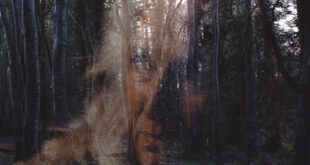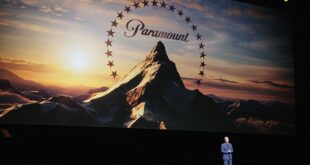With the formation of Janus Films in 1956, the era of the art-house film began. The company began importing foreign masterpieces from renowned directors such as Akira Kurosawa, Federico Fellini, and Ingmar Bergman among others, showing them to audiences in New York and Boston. The move was such an immediate success that the art-house became nearly synonymous with the nascent Beats, not to mention inspiring an entire sub-genre of film buffs.
In 1984, Criterion emerged as the home video arm of Janus. The Criterion Collection series pioneered the “special edition” of classic films, by including commentaries, documentaries, alternate endings, and other ephemera with the original feature. The year 2006 saw the 50th anniversary of Janus, and was celebrated by Criterion with the Essential Art House 50th Anniversary, a 50-DVD Box Set.
The box is simply stunning, with definitive editions of 50 films, but with an MSRP of $850, it is also a bit of an investment. In 2008, a more pared-down version of the Essential Art House Box was introduced. Volume I featured six essential Criterion Collection DVDs, and was an immediate success. Criterion has just issued Volume V in the series, which includes the following titles:
Brief Encounter (1945) — David Lean’s fourth effort takes place just after World War II, and concerns two married people who embark on a six-week affair of the heart. The latter-day criticisms of this as dated due to the lack of sex are completely off base. What makes the story and performances so riveting are the intense emotions Celia Johnson and Trevor Howard are forced to express without resorting to sexuality.
8 ½ (1963) — Federico Fellini’s hugely influential film is as unique a vision today as it was upon release. Marcello Mastroianni plays a director who is suffering from “a crisis of inspiration.” Writer’s block, in other words. The story changes locations at random, from a spa, to scenes from the director’s childhood, dream sequences, and a rocket launch pad, among countless others. In the end, the whole thing may or may not be a dream. One thing is certain though, 8 ½ is an enormously entertaining piece of cinema.
Floating Weeds (1959) — The only color feature included in this collection, Yasujiro Ozu’s update of his own 1934 picture is visually stunning. The story takes place on a small Japanese island, where a Kubuki troupe stop to perform. The group’s Master has a son, who only knows him as “Uncle.” Floating Weeds is a very deliberately paced character study especially notable for the nearly still-life compositional qualities Ozu was exploring at the time.
Jules And Jim (1962) — Francois Truffaut directed this landmark French New Wave tale of a three-way romance between best friends Jules and Jim and the free-spirited Catherine. Upon release, it was considered scandalous, and the story of two friends effectively “sharing” the love of Catherine is still somewhat disconcerting. While Jules And Jim is an undeniably important film, I found myself getting more and more frustrated with the manipulations of Catherine on the two men. The denouement was probably shocking in 1962, although it seemed a little obvious to me.
Kapo (1959) — This is my personal favorite of the collection. Italian director Gillo Pontecorvo presents a powerful World War II drama based inside a Nazi concentration camp. When a young Jewish woman is captured and is facing certain death, a camp doctor takes pity on her and gives her a new identity. To survive, she collaborates with the guards, eventually becoming a warden herself. Her attempt at redemption in the end is heartbreaking. Kapo was one of the first films to realistically portray the brutality of the concentration camps.
Loves Of A Blonde (1965) — If Kapo is the most powerful picture in Volume V, Milos Forman’s Loves Of A Blonde is the most charming. The film follows the romantic entanglements of shoe-factory worker Andula over the course of an evening. When her choices find her venturing to the house a boy shares with his family in a far-off village, we feel every bit as uncomfortable as she does. Fortunately the young musician returns her love, and we are left with an open-ended, yet seemingly positive conclusion to this chapter in her life.
The six films contained in Essential Art House Volume V represent a variety of directors and styles. With each title available individually, one may be tempted to just pick and choose their own selections, rather than buying the set. One big reason to go for the box is price. The collection costs about half of what the six DVDs would if purchased separately.
More significantly though is the element of surprise. Unless you are a hard-core foreign film fan, chances are that you are not familiar with some of the titles here. This is one of the great joys of the art-house experience, the discovery of a new-to-you picture. Like the previous four volumes of Essential Art House, the latest is a marvelous collection of cinematic originals, and a great introduction to the world of foreign film.
 Blogcritics The critical lens on today's culture & entertainment
Blogcritics The critical lens on today's culture & entertainment


